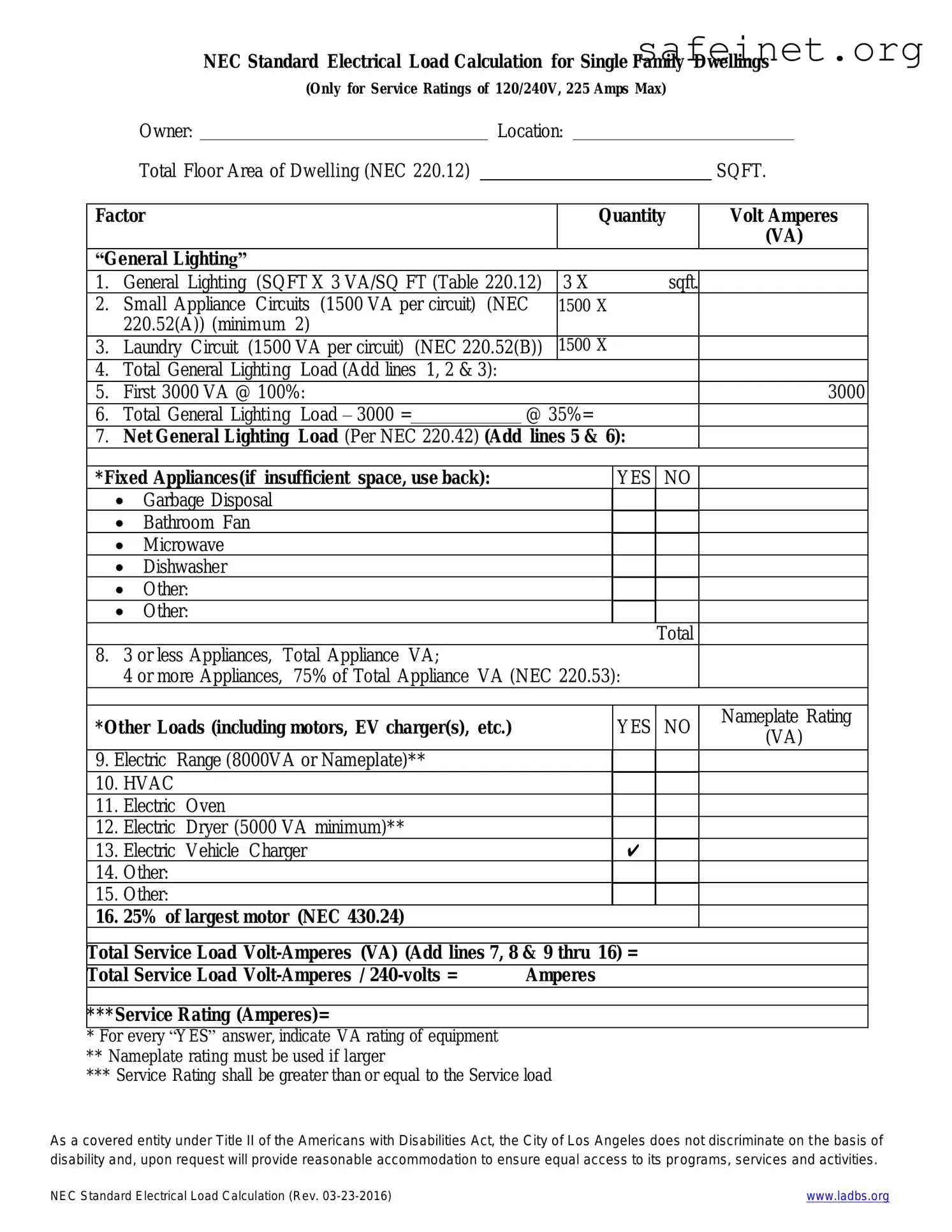The LADBS NEC Standard Electrical Load Calculation form serves a crucial role in the electrical planning and permitting process, especially within Los Angeles. This form helps ensure that electrical systems are safely designed to meet the demands of a building's intended use. It requires important data, such as service loads for lighting, heating, and appliances, which must conform to the National Electrical Code (NEC) guidelines. By gathering detailed information about a project’s specifications, it facilitates accurate load calculations and helps prevent overload situations that could lead to hazardous conditions. The structure of the form allows for clear communication between contractors, architects, and municipal officials, ensuring that all parties understand the required electrical needs. Furthermore, accurate load calculations play a vital role in achieving compliance with local regulations and maintaining public safety. Overall, the LADBS NEC Standard Electrical Load Calculation form is an indispensable tool in the electrical design landscape, ultimately guiding both residential and commercial projects toward successful execution.

